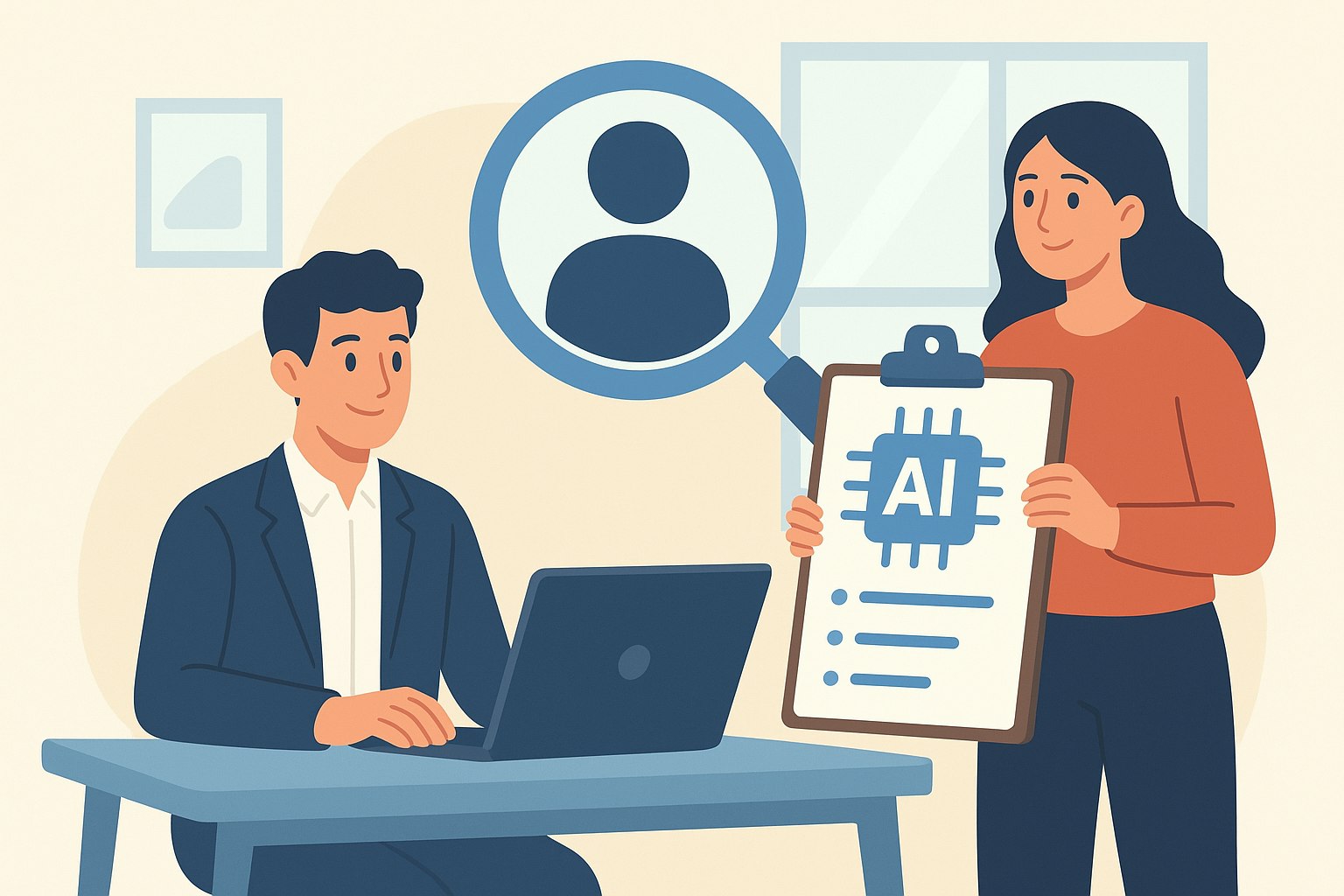Table of Content
As we head into a new year, it’s hard not to see how quickly Artificial Intelligence (AI) has moved from proof-of-concept to practical, everyday business use.
From assisting doctors during diagnosis and optimizing shipping routes for delivery fleets to summarizing research papers for scientists and personalizing product experiences for different target audiences, the technology has clearly gone mainstream.
In fact, in 2024 alone, 78% of organizations reported using AI, up from 55% the year before! And with the global AI market projected to reach $3.5 trillion by 2033, the question is no longer whether to use AI but how to implement it effectively.
That’s where the quality of AI teams becomes critical. Sure, Large Language Model (LLM) frameworks and data orchestration tools are widely available. But they hold no value if developers don’t understand data, workflows, constraints, and business targets.
How Has AI Hiring Changed in 2026?
AI development has shifted from prototype tinkering to full systems engineering. Earlier, teams would build demos quickly using off-the-shelf models and simple API calls.
However, now that AI systems are being deployed in production across various industries, it’s vital to understand data pipelines, output validation, and deployment environments, as well as how these components interact end-to-end.
There’s also greater emphasis on privacy, compliance, and cost optimization. Organizations want their AI systems to be accurate, measurable, and efficient, not just impressive in a demo.
Pre-2025 vs 2026 AI Talent Requirements
| Dimension | Pre-2025 AI Roles | 2026 AI Roles |
|---|---|---|
| Type of Intelligence Used | Generic, general-purpose models | Domain-adapted models tuned to industry data and workflows |
| Skill Profile | Prompting + API usage | Full-stack AI: data engineering, model tuning, deployment, monitoring |
| Data Interaction | Light preprocessing; unstructured inputs | Structured data pipelines, embeddings, retrieval layers, drift monitoring |
| Infrastructure Knowledge | Not required; mostly local experimentation | Cloud runtimes, GPU/TPU orchestration, vector DBs, inference scaling |
| Regulation and Governance | Rarely considered | Privacy-first, compliance-conscious development (PII protection, auditability) |
| Cost Sensitivity | Low awareness of inference cost | Active cost optimization (batching, caching, quantization, model selection) |
| Team Structure | Small experimental RandD pods | Hybrid, distributed AI teams collaborating across product, data, security, operations |
| Success Definition | Working demo or proof-of-concept | Sustained business value: reliability, accuracy, efficiency, maintainability |
How to Hire AI Developers: Practical Steps and Mistakes to Avoid, Explained by Intuz
1. Define the business problem you’re facing
Before you begin the hiring process, get clarity on the specific roadblock in your AI project. For example, if the issue is managing messy, high-volume data, you’ll need a developer with data engineering experience who can clean and structure it.
Or, if you want to improve search, retrieval, and summarization of your organization’s knowledge base (documents, conversations, and FAQs), you’ll want to look for someone who has previously worked with RAG workflows and vector databases.
This exercise helps you determine the skills to look for, the level of seniority you need, and the hiring model that makes sense for you.
Intuz Recommends:
A common mistake that many organizations make is not defining success metrics beforehand. If you don’t decide what “good” looks like, every candidate will sound promising. Therefore, translate your goal into something measurable—for example:
- Reduce handling time by 20%
- Improve search accuracy to 90%+
This way, when the person joins, you’re not guessing whether they’re doing their job. You can track their progress more objectively.
2. Choose the right hiring model for your situation
Once you know the type of support your AI project needs, the next step is to identify the hiring approach. This decision typically depends on three factors:
- How fast do you need results?
- How much flexibility do you have in cost?
- Whether someone in-house can guide, review, and shape the solution
For example, if AI is core to your product or long-term strategy, you’ll likely want to build an in-house team even though it takes time to recruit and onboard. The investment pays off through ownership and continuity.
If you’re verifying a concept or automating a small AI workflow, freelancers give you speed and flexibility with minimal commitment.
On the other hand, if your AI project requires coordinated execution across data, infrastructure, and integration, an AI development company like Intuz is often the best choice. This is especially valuable when your internal resources are limited or when the cost of a wrong turn is high.
Additionally, with an external partner, you gain a team that understands the challenges, pitfalls, and how to deliver results without trial and error.
Quick Hiring Decision Guide
| If your priority is… | Choose | Why |
|---|---|---|
| Long-term ownership and internal capability | In-house Team | You maintain knowledge, control, and continuity. |
| Speed and low commitment | Freelancer | You get progress quickly without overhead. |
| Reliable delivery across multiple moving parts | AI Development Partner | You avoid trial-and-error and get coordinated execution. |
3. Source and screen candidates effectively
By this stage, you’ve already clarified the AI use case and chosen the hiring model that fits your situation. Now it’s time, actually, to find the talent. To make this easier, use the quick reference table below as a starting point:
| Hiring Model | Where to Look |
|---|---|
| In-House Team | LinkedIn, Indeed, Wellfound, GitHub Jobs |
| Freelancer | Toptal, RemoteOK, Braintrust, Contra |
| AI Development Partner | Clutch, GoodFirms, G2, TrustRadius |
When you begin screening candidates, you’ll realize that many can write prompt models or run fine-tuning scripts. Fewer can design data workflows, evaluate model outputs in context, and deploy the system in a way that allows your teams to maintain it.
Therefore, don’t rely only on portfolios or resumes. Also, review their open-source contributions on Hugging Face, Kaggle Competitions, GitHub AI projects, or Jupyter Notebooks.
Then, ask candidates to walk you through a past project where a model moved from development to real use. This is the fastest way to assess whether they can actually build what you need.
It demonstrates how they think, how they structure MLOps pipelines and refine models, and how they make technical decisions in alignment with business goals.
Intuz Recommends:
When you work with us, this level of visibility is built in. Our engineers work directly inside your repos and cloud environment, documenting assumptions and decisions as we build. Your team always knows how the AI solution works and can modify it later without dependency. Need proof? Check out how we’ve made a difference to our clients.
4. Validate experience, cultural fit, and compensation
By the time you reach this stage, the technical examination is already complete. You’re well aware of the candidate’s capabilities. Now, you need to confirm whether they’ll work well with your team and within your organizational rhythm.
This is where soft skills, an ownership mindset, and a collaborative style matter. Look for signs of how candidates communicate and operate on a day-to-day basis. For example:
- Can they adjust their approach when priorities or data change?
- Do they proactively share progress and surface blockers early?
- Do they ask clarifying questions before diving into implementation?
- Can they explain technical decisions in clear, simple language?
Establish the project expectations early to ensure a smooth start.
Intuz Recommends:
When discussing compensation, aim for clarity rather than negotiation:
- In-house hires expect salary and long-term career stability
- Freelancers and contractors expect project clarity and well-defined deliverables
- AI software development teams typically scope work in phases so that you can scale up or down depending on progress
Skills and Capabilities to Prioritize When Hiring AI Talent
| Capability Area | What A Strong Candidate Demonstrates | Key Technologies/Tools |
|---|---|---|
| Data Engineering and Pipelines | Has built production-grade data ingestion, cleaning, transformation, and scheduling workflows | SQL, Pandas, PySpark, Databricks, Airflow, dbt, Snowflake |
| Vector Search and Retrieval (RAG) | Has designed retrieval workflows using real internal knowledge bases; understands embeddings, chunking strategies, and indexing | Pinecone, Weaviate, Chroma, pgvector, OpenSearch |
| LLM Adaptation and Evaluation | Can fine-tune adapt models to domain language; uses structured evaluation methods rather than subjective “it sounds right” | LoRA/QLoRA, OpenAI evals, Cohere evals, LangChain / BTE |
| MLOps and Monitoring | Has deployed and maintained models in live environments; can track drift, roll back versions, and manage reproducibility | MLflow, BentoML, Weights and Biases, Kubernetes |
| Application Integration | Has integrated AI into real product workflows with attention to latency, UX, failover behavior, and observability | FastAPI, Flask, Node.js, REST/GraphQL APIs, AWS/GCP/Azure |
| Business and Domain Understanding | Can connect architecture choices to business priorities, constraints, and ROI; industry context is a strong advantage | Relevant sector experience (HealthTech, FinTech, Logistics) |
What’s the Cost of Hiring AI Developers in 2026?
Here’s a two-tier comparison to help you understand cost patterns across hiring models for AI developers:
Regional salary benchmarks (2026) - Annually
| Role | United States | Europe | India |
|---|---|---|---|
| AI Architect | $142,750 – $196,750 | €85,000 – €155,000 | ₹28,00,000 – ₹48,00,000 |
| ML / AI Engineer | $134,000 – $193,250 | €60,000 – €135,000 | ₹18,00,000 – ₹42,00,000 |
| Data Scientist (GenAI focus) | $121,750 – $182,500 | €55,000 – €120,000 | ₹14,00,000 – ₹30,00,000 |
| Applied ML / AI Analyst | $105,250 – $152,500 | €48,000 – €95,000 | ₹10,00,000 – ₹22,00,000 |
Hidden and ongoing costs (2026)
| Cost Areas | Typical Impact |
|---|---|
| Cloud compute + storage | ~20–30% overhead during development + inference |
| Model hosting + API licensing | Scales with usage; enterprise LLMs + vector DBs drive recurring cost |
| Retraining + drift monitoring | ~15–25% annual maintenance to keep accuracy stable |
| Data preparation + SME time | Commonly under-budgeted; slows down > 40% of GenAI projects |
| Compliance + security controls | Higher impact in healthcare, finance, and regulated data environments |
Why Partner With Intuz for AI Development
If you’ve read this far, you have a clear understanding of what goes into hiring AI talent, including the skills to look for, the assessment steps, the hiring models, and the trade-offs involved. You also know the common hiring mistakes to avoid.
And if you prefer to skip the sourcing, screening, and onboarding process, partner with Intuz. Our engineers build directly within your cloud environment, utilize open-source frameworks that your team can extend, and document decisions as the AI solution evolves.
We also support the full lifecycle, comprising workflow definition, data preparation, model adaptation, deployment, and monitoring, which keeps the project moving in one continuous path without unnecessary hand-offs.
If you’d like to see whether a specific workflow is suitable for AI, we can review it together.
A focused 45-minute working session is typically sufficient to assess feasibility and outline next steps. Book a free consultation with Intuz today!
About the Author
Kamal Rupareliya
Co-Founder
Based out of USA, Kamal has 20+ years of experience in the software development industry with a strong track record in product development consulting for Fortune 500 Enterprise clients and Startups in the field of AI, IoT, Web & Mobile Apps, Cloud and more. Kamal overseas the product conceptualization, roadmap and overall strategy based on his experience in USA and Indian market.







